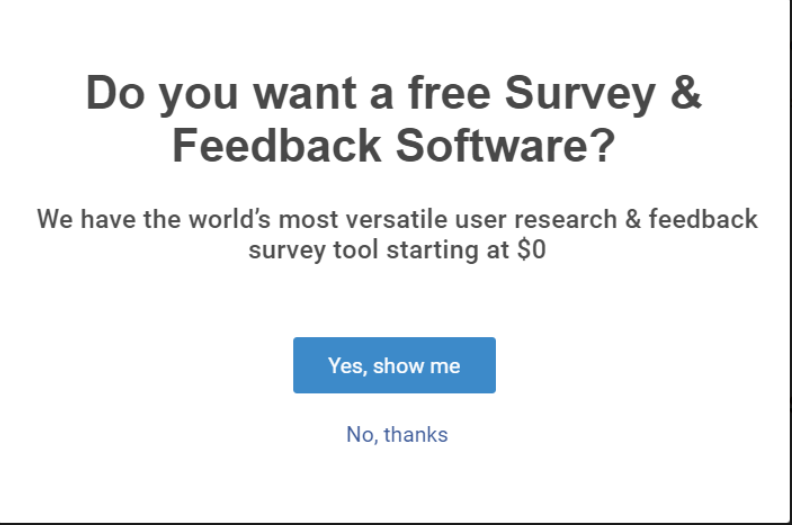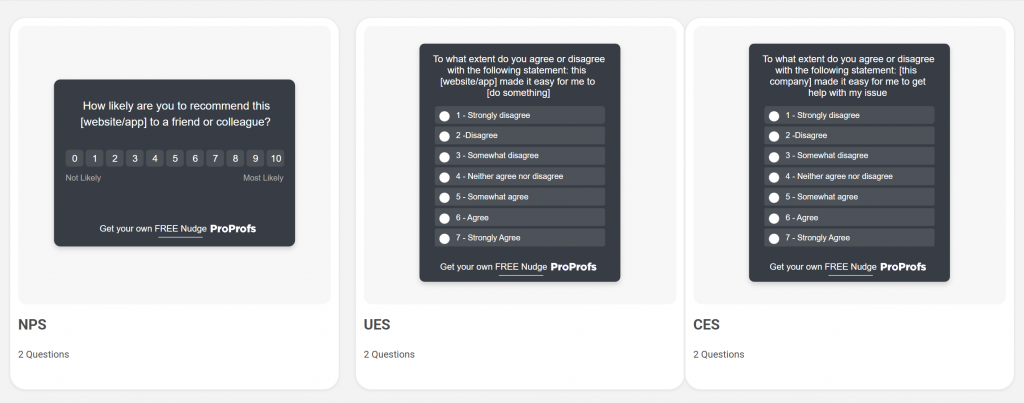Customer experience isn’t just about keeping customers happy—it’s about protecting your brand’s reputation and building lasting relationships. For 63% of consumers, a bad experience leads to negative word of mouth. Trust me, I’ve seen how quickly one bad experience can ripple out, costing not just one customer but their friends and family, too. That’s a risk no business can afford.
This is where customer experience management (CXM) makes all the difference. It’s about taking a hands-on approach to refining every interaction your customers have with your brand. From resolving support tickets faster to making your website navigation a breeze, CXM helps ensure every touchpoint leaves a positive impression.
In this blog, I’ll explain how you can leverage CXM to protect your brand and turn every customer into a loyal advocate. But first, let’s start with the basics.
What Is Customer Experience Management?
CXM is about managing and optimizing every customer interaction with your brand. It tracks their journey—from hearing about your company to purchasing and seeking support—to ensure each touchpoint exceeds expectations. The goal? Boost loyalty, create advocates, and enhance satisfaction.
As Shep Hyken aptly said, “The best advertising you can have is a loyal customer spreading the word about how incredible your business is.”
CXM connects customer satisfaction to marketing success, focusing on three key areas:
- Success: Did the interaction meet the customer’s needs?
- Effort: How easy was the process?
- Emotion: How did the interaction make them feel?
These elements determine how customers perceive your brand and whether they’ll stick around. Yet, many companies still struggle to implement effective CXM strategies.
Why Customer Experience Management Matters Now More Than Ever
Today’s customers don’t just buy products; they buy experiences. One clunky checkout. One ignored support ticket. One impersonal email. That’s all it takes to lose them—sometimes for good.
I’ve seen businesses pour everything into building a great product, only to watch customers slip away because the experience around it didn’t hold up. And here’s the thing: customers talk. A bad experience isn’t just a lost sale—it’s a lost referral, a lost community member, and sometimes a wave of negative word of mouth.
This is why CXM isn’t just about delighting customers. It’s about safeguarding your revenue, reputation, and retention—all at once.
Here’s why CXM should be a strategic priority:
1. Increases Customer Retention
Acquiring new customers is expensive—up to five times more than retaining existing ones. CXM focuses on reducing friction in the customer journey so your hard-earned users don’t slip away. By consistently delivering value and resolving pain points quickly, you give them fewer reasons to churn and more reasons to stay.
In fact, according to a recent state of CX report by Genesys, after one bad service interaction:
- 12% of consumers will switch from their favorite companies or brands.
- 25% will switch from companies or brands with which they do occasional business.
2. Builds Emotional Loyalty, Not Just Functional Satisfaction
Customers may forget what you said, but they won’t forget how you made them feel. CXM helps you design every touchpoint—emails, support chats, checkout pages—with empathy, context, and relevance. That emotional connection fosters loyalty that can’t be bought.
Emotionally connected customers are three times more likely to repurchase and recommend your brand to others.
According to the same Genesys report, 74% of customers are likely to purchase repeat items from the same company after receiving consistently personalized service.
3. Drives Revenue Through Advocacy and Lifetime Value
Happy customers don’t just stick around—they bring others along for the ride. When you create experiences worth sharing, you reduce your reliance on paid acquisition and increase word-of-mouth referrals. Plus, loyal customers tend to spend more time exploring additional products or services.
Brands that invest in CXM see up to 80% higher revenue growth than those that don’t.
4. Improves Decision-Making Through Real-Time Feedback
CXM tools allow you to capture feedback in real time—whether it’s through in-app surveys, support tickets, or customer behavior. This gives you clarity on what’s working, what’s not, and what to fix before it escalates. It’s not just about being reactive—it’s about being responsive with data to back it up.
This feedback becomes a strategic asset for product, marketing, and support teams alike.
5. Future-Proofs Your Brand in a Competitive Market
The bar for customer experience keeps rising. What was once “good enough” is now the baseline. CXM ensures you’re not just keeping up—you’re setting the standard. By consistently evolving your approach based on customer insights, you protect your brand from becoming outdated.
Adaptability in CX isn’t a trend—it’s a requirement for long-term survival.
The takeaway?
CXM isn’t just a feel-good initiative—it’s a growth strategy. One that strengthens your customer relationships, powers your marketing, and keeps your business relevant in a world where customer expectations change by the minute.
What Is the Customer Experience Journey?
The customer experience journey refers to the entire lifecycle of interactions a customer has with your brand, from their first impression to long-term engagement. It’s the path your customer walks, filled with key touchpoints that shape how they perceive your business.
This journey often starts before they even interact with you—when they hear about your brand through marketing, social media, or word of mouth. It continues through steps like exploring your offerings, purchasing, and seeking post-sale support. Every single touchpoint matters because even a minor hiccup can affect their overall perception.
There are at least four touchpoints in the customer experience journey that include:
Research– This is where customers discover your company online or in person via advertising or from third parties, including friends, colleagues, consultants, etc.
Comparison– This is where customers learn more about your brand by looking at your competitors and your functions, capabilities, offerings, attributes, and how you can fulfill their needs.
Purchase– This is the part where customers decide about making a purchase and also where customer retention and loyalty building begins.
Support– In the final phase, the customer support teams act and put in their best efforts to ensure that every customer grievance is resolved promptly and effortlessly.
Take, for example, someone shopping online. Their journey might include browsing your website, reading reviews, adding a product to their cart, completing checkout, and receiving follow-up communication or support. Each step contributes to their experience and whether they’ll become loyal customers.
A well-mapped customer journey helps businesses identify friction points and areas of delight. It allows you to optimize interactions, ensuring customers feel valued and understood at every stage. This isn’t just about providing good service—it’s about creating seamless, personalized experiences that leave a lasting impression.
Difference Between CXM & CRM
CXM and customer relationship management (CRM) might sound similar, but they serve distinct purposes in enhancing businesses’ interactions with their customers. Look at the following comparison table for a quick overview:
| Feature | CXM | CRM |
|---|---|---|
| Focus | Creating positive experiences across all touchpoints | Managing customer interactions to drive sales |
| Scope | Holistic; encompasses the entire customer journey | Specific; focuses on sales, marketing, and support |
| Goal | Increase customer satisfaction, loyalty, and advocacy | Improve customer retention and increase revenue |
| Metrics | CSAT, NPS, churn rate, CES | Sales conversion rates, CLTV, lead generation |
| Tools | Surveys, journey mapping, UX analysis, social media monitoring | CRM software, databases, email marketing, automation |
| Customer-centricity | High, focuses on emotions and feelings | Moderate, focuses on processes and data |
| Business orientation | Moderate, supports overall business goals | High, directly tied to sales and revenue |
| Data usage | Gathers data to understand customer perceptions | Leverages data to optimize interactions and sales |
| Example | Designing a user-friendly website with helpful content | Using CRMs to track customer interactions and send targeted emails |
FREE. All Features. FOREVER!
Try our Forever FREE account with all premium features!
Key Customer Experience KPIs to Measure
When it comes to improving customer experience, focusing on the right KPIs can ensure your efforts are strategic and measurable. Here’s a look at the most essential metrics to track:
1. Customer Acquisition Rate
This measures your ability to attract new customers over a specific period.
| Formula: (New Customers Acquired / Total Leads) × 100 |
Application: If your acquisition rate is low, you should refine your marketing strategies or improve your sales funnel.
2. Cart Abandonment Rate
This tracks the percentage of online shoppers who add to their cart but don’t complete the purchase.
| Formula: [(Total Carts Created – Completed Purchases) / Total Carts Created] × 100 |
Application: A high cart abandonment rate signals issues like complicated checkout processes, unexpected costs, or technical glitches.
3. Net Promoter Score (NPS)
This measures customer loyalty by asking, “On a scale of 0–10, how likely are you to recommend our brand to your family and friends?”
| Formula: NPS = % Promoters (9-10) – % Detractors (0-6) |
Application: A higher NPS reflects strong customer advocacy, while a lower score identifies areas needing immediate attention.
4. Direct Traffic
This tracks the number of users directly visiting your website by typing in your URL.
| Formula: Direct traffic is typically provided by analytics tools like Google Analytics as a percentage of total site traffic. |
Application: High direct traffic indicates strong brand recognition and customer trust.
5. Average Resolution Time
This KPI measures how long it takes to resolve customer issues after they’ve been reported.
| Formula: Total Resolution Time / Number of Tickets Resolved |
Application: Reducing resolution time improves customer satisfaction and operational efficiency.
6. Customer Satisfaction (CSAT)
This is measured by asking customers to rate their satisfaction with a specific interaction or service.
| Formula: (Total Positive Responses / Total Responses) × 100 |
Application: A high CSAT score reflects strong performance, while a low score highlights pain points needing improvement.
7. Conversion Rate
This metric monitors the percentage of users who complete a desired action on your website, such as purchasing or signing up for a service.
| Formula: (Conversions / Total Visitors) × 100 |
Application: Improving conversion rates often involves enhancing the user journey, simplifying processes, or optimizing website content.
8. Marketing Campaign Effectiveness
This metric evaluates how well your marketing efforts drive engagement, leads, or conversions.
| Formula: Effectiveness varies depending on the goal, but common metrics include: Click-Through Rate (CTR): (Clicks / Impressions) × 100Conversion Rate: (As mentioned above) |
Application: Strong campaign performance signals alignment with customer needs, while low performance indicates a need for reevaluation.
9. Pages Per Visit
This tracks how many pages users view on average during a single session.
| Formula: Total Page Views / Total Visits |
Application: Higher pages per visit indicate better engagement and content relevance, while lower numbers suggest areas to improve navigation or content quality.
10. Customer Churn Rate
This reflects the percentage of customers who stop doing business with you over a period.
| Formula: (Customers Lost During Period / Total Customers at Start of Period) × 100 |
Application: Monitoring churn rate helps identify retention challenges and areas needing improvement, like onboarding or loyalty programs.
Challenges of Customer Experience Management
Customer experience doesn’t just include customer satisfaction; it refers to the whole ecosystem of the customer journey. An ecosystem that is tricky to create for the CX teams as they interact with marketing, sales, and every other department that customers might encounter.
Let’s look at some of the most notable customer experience management challenges:
1. Lack of Data Accessibility
Many companies struggle to access the right data to improve customer experience. Even when data is available, it’s often unorganized and underutilized, making it hard to identify pain points or track progress. Without clear insights, CX teams are left to guess what needs improvement or if their efforts are working
Pro Tip: Research is your best friend. Both primary and secondary research can uncover valuable insights to refine your CX strategies. Use online data collection tools like Qualaroo that integrate seamlessly with other systems, ensuring secure and efficient data management. This makes organizing and acting on your data a lot easier.
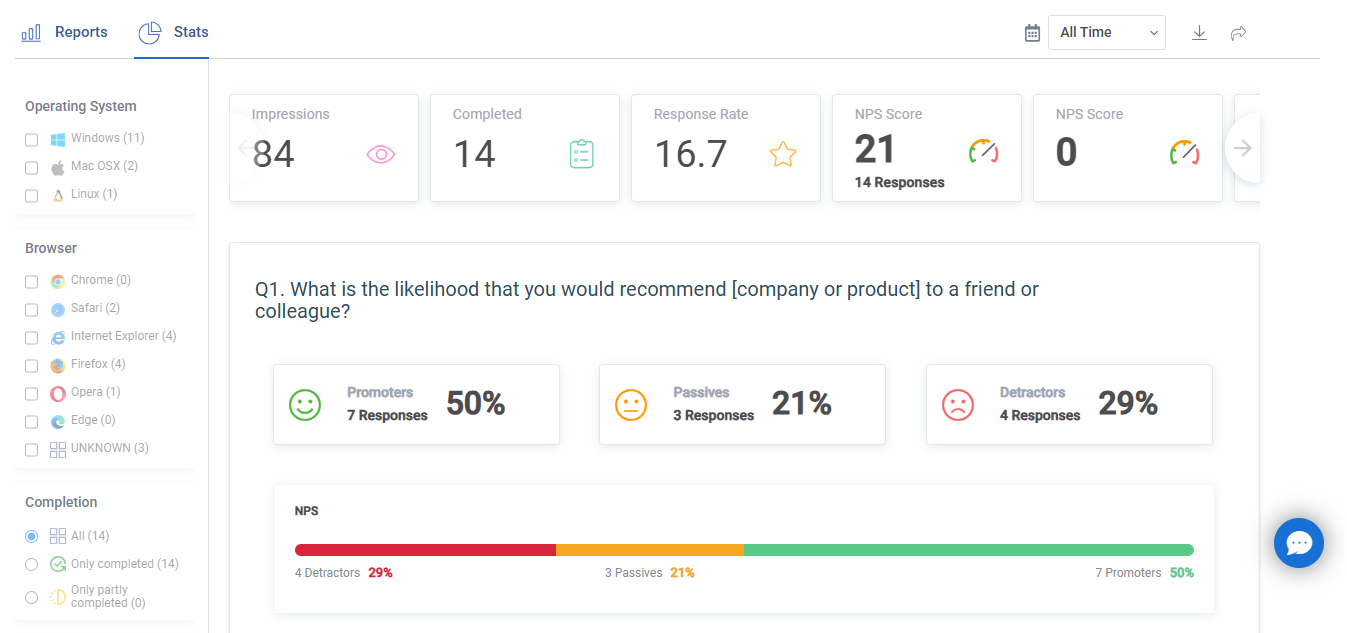
2. Little Investment
Many businesses want to excel at customer experience, but only a handful actually commit the resources needed to make it happen. Building momentum for CX strategies often requires significant effort and funding, but a lack of awareness or internal buy-in stalls progress.
Pro Tip: Start by gathering solid data about your customer experience and craft a compelling case for why it matters. Use qualitative metrics to build a story that resonates with leadership. Additionally, delegate responsibilities clearly to ensure your team knows what to do and takes accountability for driving CX initiatives forward.
3. Reliance on Outdated Tools
Modern CX is powered by innovative technology like AI, chatbots, and marketing automation. Yet many companies still use outdated tools and processes, missing opportunities to streamline operations and deliver personalized experiences.
Pro Tip: You can deploy a software tool like BigContacts designed to manage prospects and customer relationships seamlessly. With it, you can easily Capture more leads, automate your marketing campaigns, track all your contacts, and nurture more opportunities for the future.
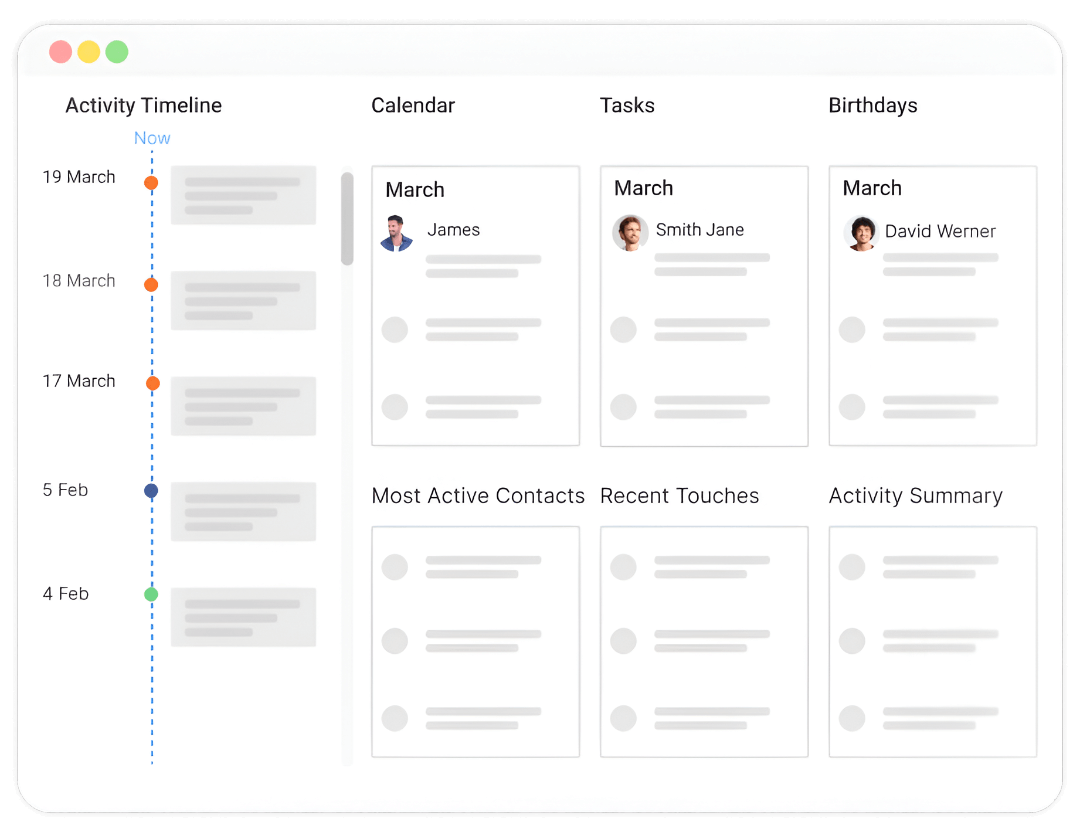
4. Struggles With Personalization
Personalized experiences are known to increase sales and encourage customers to build trust with the brand over time. This is how loyal customers are built. When customers feel that a brand is going out of its way to offer something unique to them, they feel more attached to the brand and are compelled to spend more.
Pro Tip: Personalizing your services is not that hard. Something as simple as adding your customer’s first name to every interaction will make a huge difference. Loyalty programs are also quite popular, and you can be spontaneous with your offers to let your customers know that you appreciate their presence.
5 Steps to Establish a Superior CXM System
There are many ways of creating an outstanding customer experience to improve overall customer satisfaction. Here are some of the most effective ones:
Step 1- Create a Clear Customer Vision
It all starts with creating a clear, customer-focused vision that you can effectively communicate with your organization. Here, you need a few guiding principles that will help you deliver an impeccable customer experience.
For instance- 3M is a global organization with over 90,000 employees that produces innovative technology solutions and has a set of few guiding principles that include:
- Acting with uncompromising honesty and integrity.
- Satisfying customers with innovative technology and superior quality.
- Providing investors with attractive returns through sustainable growth and many more.
Similarly, when principles like these are in place for your organization, they will drive the behavior of employees in the right direction, and every member will work keeping in mind the end goal and the right ways of achieving it.
Step 2- Understand Who Your Customers Are
The next step is to bring to light the different types of customers who interact with your brand. If you genuinely want to predict your customer’s needs, you must understand who they are and how they behave.

The most effective way of doing this is by segmenting your customers and creating buyer personas. Try giving those personas a name for better classification. For instance, John is 35 years old, likes innovative technologies, is quite active on social media, and will not need much support in troubleshooting.
Creating personas is the best way to understand who your customers are and a crucial step in being truly customer-centric.
Step 3- Create an Emotional Connection With Your Customers
You’ve probably heard the saying, “It’s not what you say, it’s how you say it.”
The best customer experiences are created when members of your organization form an emotional connection with the customers.

The Journal of Consumer Research data states that more than 50% of the experience is based on emotions. Also, emotionally connected businesses outperform competitors by 85% in sales growth. This is why an emotional connection with the customers cannot be overlooked and is an opportunity you should always capitalize on.
Step 4- Capture Feedback in Real-Time
How to know if you are delivering a WOW customer experience? By asking the customers themselves right then and there. Circulating online surveys is the best way to do that. Tools like Qualaroo specialize in such formats as you can use Qualaroo to deliver contextual surveys to customers using 6+ channels in the form of entirely unobtrusive popups.
The data is collected and analyzed in real-time, which eliminates any time lag and instantly uncovers the results of your customer experience efforts. You can also use Qualaroo to target specific customer segments, one of the most critical yet unsaid pointers, as it will allow you to gather accurate and relevant data.
Step 5- Act Upon the Feedback & Deliver on Experience
The final step is to take the feedback constructively and act upon it by making necessary changes. Most organizations have a very uncertain schedule for collecting feedback and addressing problems.
However, collecting feedback regularly and making changes to your offering will allow you to build trust in your customers and stay up to speed with rapidly changing trends.
Best Practices to Create a Great Customer Experience
Creating a top-notch customer experience isn’t rocket science, but it does take intention and effort. It’s about consistently showing up for your customers and making every interaction count. Here’s how you can make that happen:
1. Understand the Customer Journey Inside Out
Every customer interacts with your business in various ways. Mapping their journey—from discovering your brand to post-purchase follow-ups—helps you see what’s working and where you’re failing. This gives you the power to fix what’s broken and double down on what’s awesome.
2. Make It Personal
Nobody wants to feel like just another number. Personalization is more than just throwing someone’s name into an email. It’s about understanding their preferences, offering recommendations they’ll love, and making them feel like you “get” them. Trust me, it’s worth the effort.
3. Be Consistent Everywhere
Customers don’t care if they’re chatting with you on Instagram, emailing your support team, or walking into your store—they want the same level of service everywhere. Ensure your tone, responses, and experience stay seamless across all channels. It’s like being a dependable friend they can count on.
4. Listen in Real Time
Feedback is a goldmine, especially when it’s fresh. Tools like Qualaroo’s Nudges™ make it super easy to ask customers what’s on their mind while they’re engaging with your brand. The best part? Acting on their suggestions makes them feel heard and valued, which is half the battle won.
5. Give Your Team the Tools They Need
Your employees are the front line of your customer experience strategy. Equip them with proper training, tools, and the autonomy to solve problems. An empowered team means fewer escalations, happier customers, and a team pumped to deliver its best.
6. Speed Things Up
Nobody likes waiting, especially when they’re frustrated. Whether it’s a simple chatbot answer or resolving a tricky issue, faster response times make all the difference. Focus on reducing delays without sacrificing quality.
7. Stay One Step Ahead
Anticipating customer needs shows you’re paying attention. Whether it’s reminding them about an expiring subscription or offering setup tips for a new product, proactive support goes a long way in building loyalty.
8. Nail the Digital Experience
Your website or app is often the first impression of your brand, so don’t let it fumble. Easy navigation, quick load times, and a smooth checkout process make customers happy. And when they’re happy, they’re sticking around.
9. Track What Matters
Metrics like NPS, CSAT, and retention rates aren’t just numbers—they tell you how you’re doing and where you need to improve. Regularly check in on these, tweak your strategies, and keep moving the needle forward.
10. Make Customer-Centric Your DNA
When your whole team thinks “customer-first,” magic happens. It’s not just about saying you care—it’s about showing it in every decision you make. A customer-focused culture gets everyone on the same page, working towards the same goal: happier, more loyal customers.
Follow these practices, and you’ll create an experience your customers won’t forget—and, more importantly, won’t stop talking about. It’s all about making them feel like they matter because they do.
FREE. All Features. FOREVER!
Try our Forever FREE account with all premium features!
Real-Life Customer Experience Success Stories
Great customer experience isn’t just theory—it’s lived in the details. The best brands don’t just meet expectations. They anticipate needs, create moments, and turn everyday touchpoints into emotional loyalty loops.
Here’s how companies across industries are doing just that—with real results to show for it.
Belron – 70% Faster Insight Collection With Qualaroo
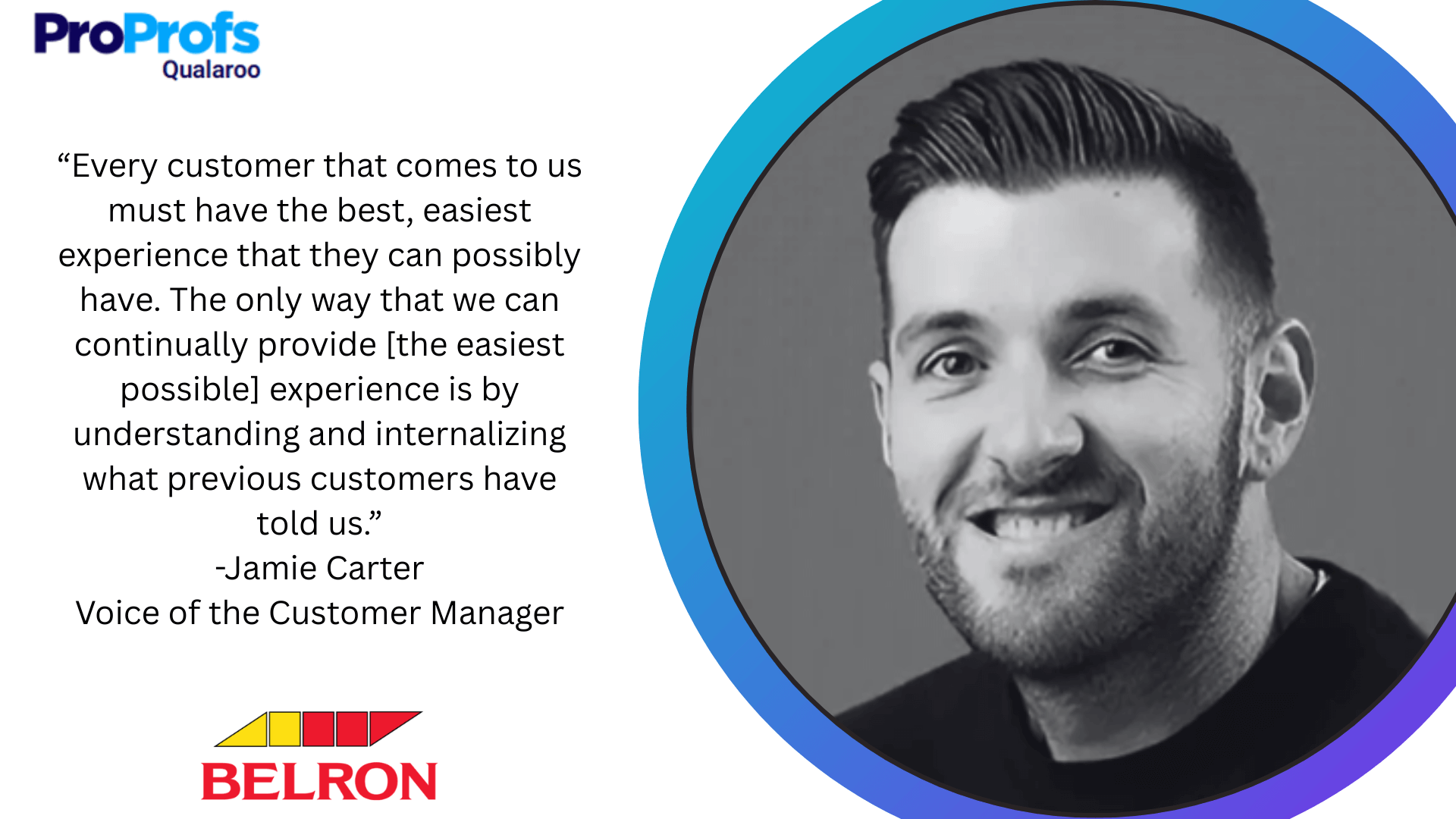
Belron, a global vehicle glass repair company, needed to collect user insights fast—without disrupting the customer journey. Using Qualaroo’s on-site Nudges™, they were able to gather contextual feedback during the browsing experience itself.
The result? A 70% reduction in time spent collecting and analyzing feedback, with clear, structured insights delivered in hours instead of days. The feedback allowed them to identify customer friction points in real time, optimize the booking flow, and drive a smoother service experience across multiple regions.

Twilio – Closing the Feedback Loop With Real-Time Data
Twilio’s growth depends on delivering seamless, scalable API experiences for developers. But improving those experiences required more than backend improvements—it required real customer voice.
By embedding Qualaroo into their developer documentation and dashboards, Twilio captured real-time feedback on usability, confusion points, and documentation gaps. Instead of waiting for surveys or support tickets, product teams acted instantly on what users said in the moment.
This loop helped Twilio ship smarter, faster, and more user-aligned updates—especially critical in a technical, B2B environment where documentation clarity can directly impact adoption.
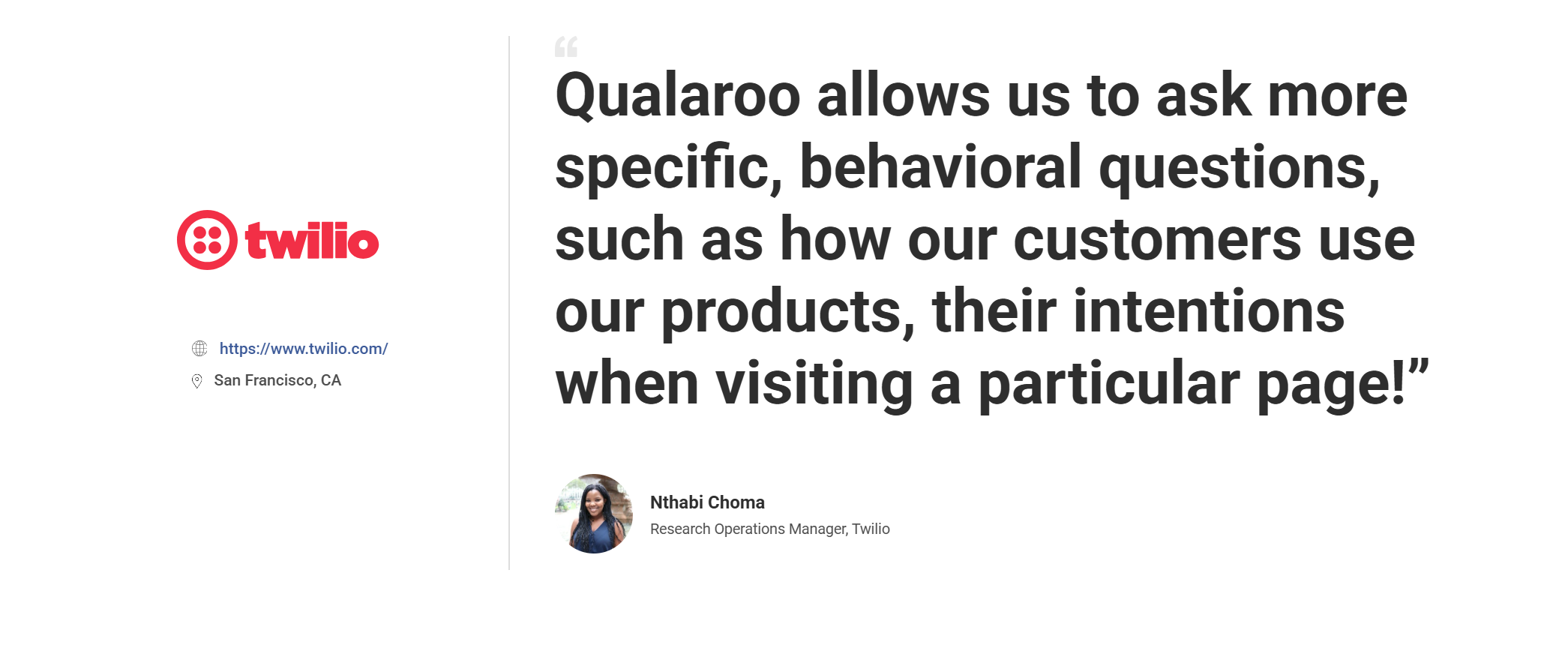
Spotify – Scaling Personalization Without Losing Soul

Spotify’s Wrapped campaign is more than an annual tradition—it’s a masterclass in data-driven storytelling. In 2024, they rolled out new features like Your Music Evolution, AI DJ, and Wrapped AI Podcast, combining listener data with cultural insight to deliver a reflection that feels deeply personal.
What makes it work? A blend of editorial curation and algorithmic precision. While Spotify’s tech analyzes skips, replays, and playlist behavior, its global team of music editors spots trends, identifies rising artists, and helps train the very models that power user recommendations.
That balance between automation and human creativity drives over 2 billion music discoveries per day—and helps Wrapped feel like a gift, not just a recap.

“Wrapped reflects not just your data, but your journey, your taste, and your moments.”
— Molly Holder, Spotify’s Senior Director of Personalization
Chewy – Leading With Empathy, Not Scripts
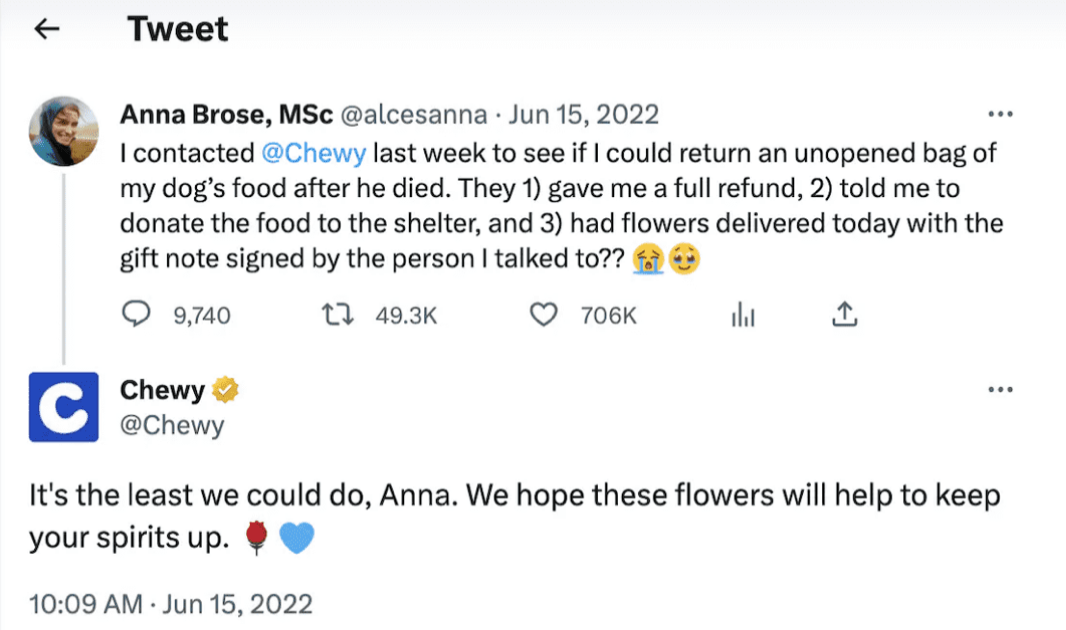
Chewy didn’t build its reputation on convenience alone—it built it on care. When pet owners lose a beloved companion, Chewy does more than process refunds. They send handwritten notes, flowers, and even hand-painted pet portraits—completely unprompted.
One customer, after notifying Chewy that his dog had passed, received a custom portrait in the mail. Others have shared similar stories, turning private moments into public gratitude—and making Chewy one of the most loved brands on social media.
And it’s not just sentiment. These gestures drive viral word-of-mouth, repeat purchases, and a sense of brand humanity that no chatbot can replicate.

“Showing up for our customers during important milestones in their pet parenting journey is core to our DNA.”
— Andrew Stein, Senior Director of Customer Service at Chewy
Top 3 Customer Experience Management Software Platforms
You can have the best intentions, but without the proper support, understanding what your customers need and how to improve their journey can feel like guesswork. That’s where CXM tools step in.
Let me walk you through some of the top options, including tools I’ve seen that really transform the way businesses approach CX:
1. Qualaroo
Qualaroo shines with its subtle “Nudges™” that collect real-time feedback directly from your website, app, or product. These unobtrusive surveys let me gather targeted insights without disrupting the user experience. I love how I can easily identify pain points and personalize customer journeys. Qualaroo empowers you to:
- Address issues like cart abandonment or navigation difficulties.
- Personalize your content and offers based on individual customer preferences.
- Track your customers’ sentiments during key moments in their journey.
- Act quickly with detailed analytics to spot trends and take action.
With its advanced targeting and easy-to-use interface, Qualaroo makes optimizing customer experiences seamless.
2. HubSpot Service Hub
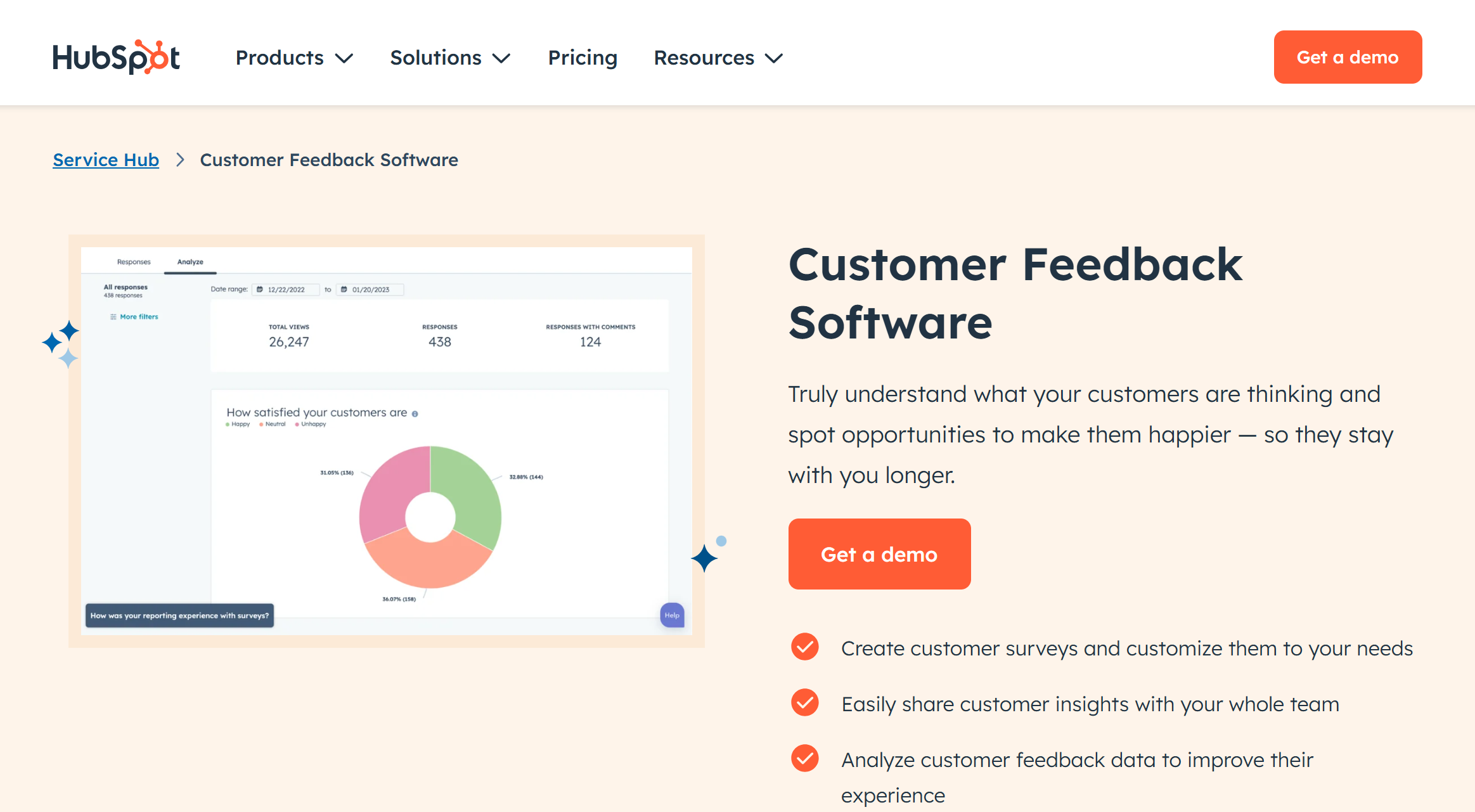
HubSpot Service Hub focuses on efficient customer service, helping businesses resolve issues and strengthen relationships. It is integrated with HubSpot’s CRM and offers a unified view of all customer interactions. My favorite features include:
- Omnichannel communication for seamless support across platforms like email and live chat.
- An automated ticketing system to streamline support processes.
- A knowledge base for self-service support, reducing ticket volumes.
- Customer feedback surveys to gain insights and enhance service quality.
It ensures every interaction is efficient, personalized, and memorable. It’s a must-have for businesses aiming to turn customer service into a growth driver.
3. Adobe Experience Platform

Adobe Experience Platform is a powerhouse for businesses looking to deliver personalized, data-driven customer experiences. I love how it integrates data from multiple touchpoints to create a unified customer profile, allowing you to:
- Monitor & analyze customer behavior across all channels.
- Use AI-driven insights to predict trends and refine customer experiences.
- Automate tailored marketing campaigns based on real-time data.
- Track the entire customer journey with an intuitive interface and actionable analytics.
With robust data integration and advanced analytics, Adobe Experience Platform is an incredible tool for businesses that prioritize personalization and customer satisfaction.
6 Features to Look for in a CX Management Platform
Out of tons of features that any customer experience management platform offers, here are a few that should be on your priority list:
- Multi-Channel Reach: Customers use multiple touchpoints and channels along their journey, so it makes no sense to restrict your focus to only one medium. This will not give you a complete view of customers’ expectations, issues, and preferences. So, when you are looking for a CX management platform, check to see if it lets you target customers across multiple channels.
- Modes of Gauging Customer Experience: How you want to collect customer experience data is next up in line. It will determine where to look for. Analyze the suitable modes of collecting customer experience insights and make a list of CX management platforms that offer the solutions. For example:
- If CX surveys are on your mind, Qualaroo can be a suitable option.
- SessionCam can be your go-to tool if you want to record user sessions.
- If you want to embed a feedback button on the web pages, ProProfs SurveyMaker features a feedback sidebar widget.
- Data Analysis System: Every CX management platform offers a data analysis system, but you need to look for something to lessen the burden on your teams. I suggest picking a tool that provides an AI-based analytical system like Qualtrics or Qualaroo because it can:
- Reduce feedback analysis time
- Help spot patterns and trends in the responses
- Compare the CX scores over time
- Predict the impact of CX scores on business KPIs
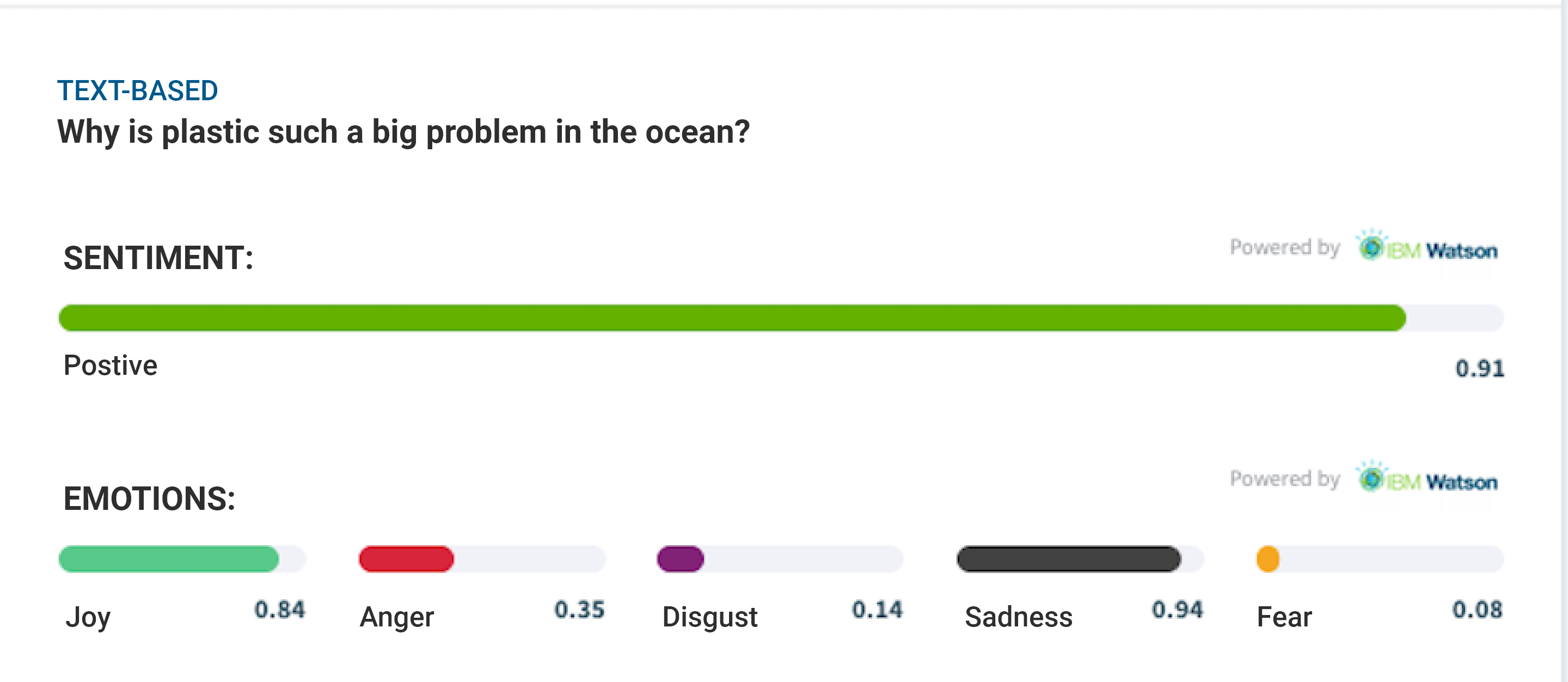
- Reporting and Segmentation: After analysis, next is the reporting section. A CX management tool should have a robust reporting dashboard so you can sort the data as you want. Look for something that offers multiple filter types and sorting options to let you create custom reports. Also, don’t forget to browse the sharing options.
- Visual Dashboards: Visual dashboards automatically turn data points into charts and graphs. The biggest benefit of such a system is its real-time monitoring capabilities. You can track CX scores like CSAT and NPS in real time. This gives you an edge over manual data interpretation, allowing you to spot any issues or changes in customer experience easily. So, find a CX management tool that incorporates a built-in dashboard or offers means to create one.
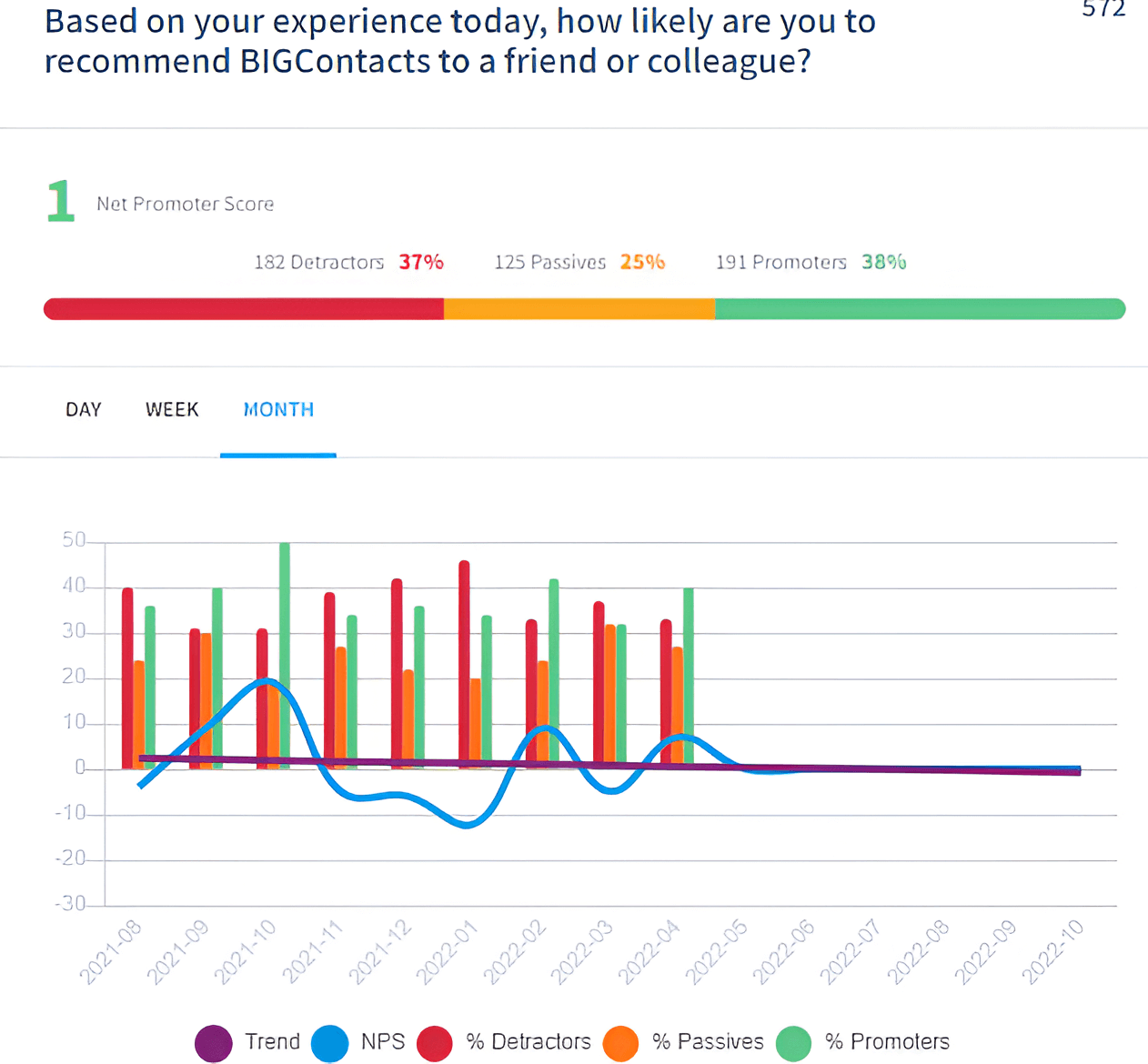
- Integration APIs: Our teams at Qualaroo monitor integration APIs before adding any tool to our arsenal. We work with different tools, and manually exporting and importing data between them would be time-consuming and create a risk of data mismanagement. If the CX tool offers built-in integrations, you can quickly connect your workspace tools and automate workflows. You can trigger surveys from CRM data, and responses automatically update the customer’s CRM profile.
Master Customer Experience for Long-Lasting Connections!
Creating exceptional customer experiences isn’t just another box to tick—it’s about genuinely understanding and valuing your customers at every touchpoint. Customer experience management isn’t just about solving problems; it’s about building relationships that make your customers feel acknowledged, appreciated, and connected to your brand.
With tools like Qualaroo, you’ve got everything you need to turn feedback into action. Whether it’s capturing real-time insights, personalizing interactions, or streamlining support, these tools empower you to create experiences that go beyond expectations.
The best part? Happy customers don’t just stick around—they bring their friends along for the ride. So, if you’re serious about growth, now’s the time to double down on your CX efforts.
FREE. All Features. FOREVER!
Try our Forever FREE account with all premium features!
Frequently Asked Questions
What are the three 3 objectives of customer management?
The top 3 objectives of customer management are:
- Increase Customer Satisfaction: Focus on meeting needs, exceeding expectations, and resolving issues effectively to ensure happy customers.
- Improve Customer Retention: Build loyalty and reduce churn by fostering strong relationships and providing value.
- Drive Customer Advocacy: Turn satisfied customers into brand ambassadors through positive experiences and referral incentives.
FREE. All Features. FOREVER!
Try our Forever FREE account with all premium features!

 We'd love your feedback!
We'd love your feedback! Thanks for your feedback!
Thanks for your feedback!


